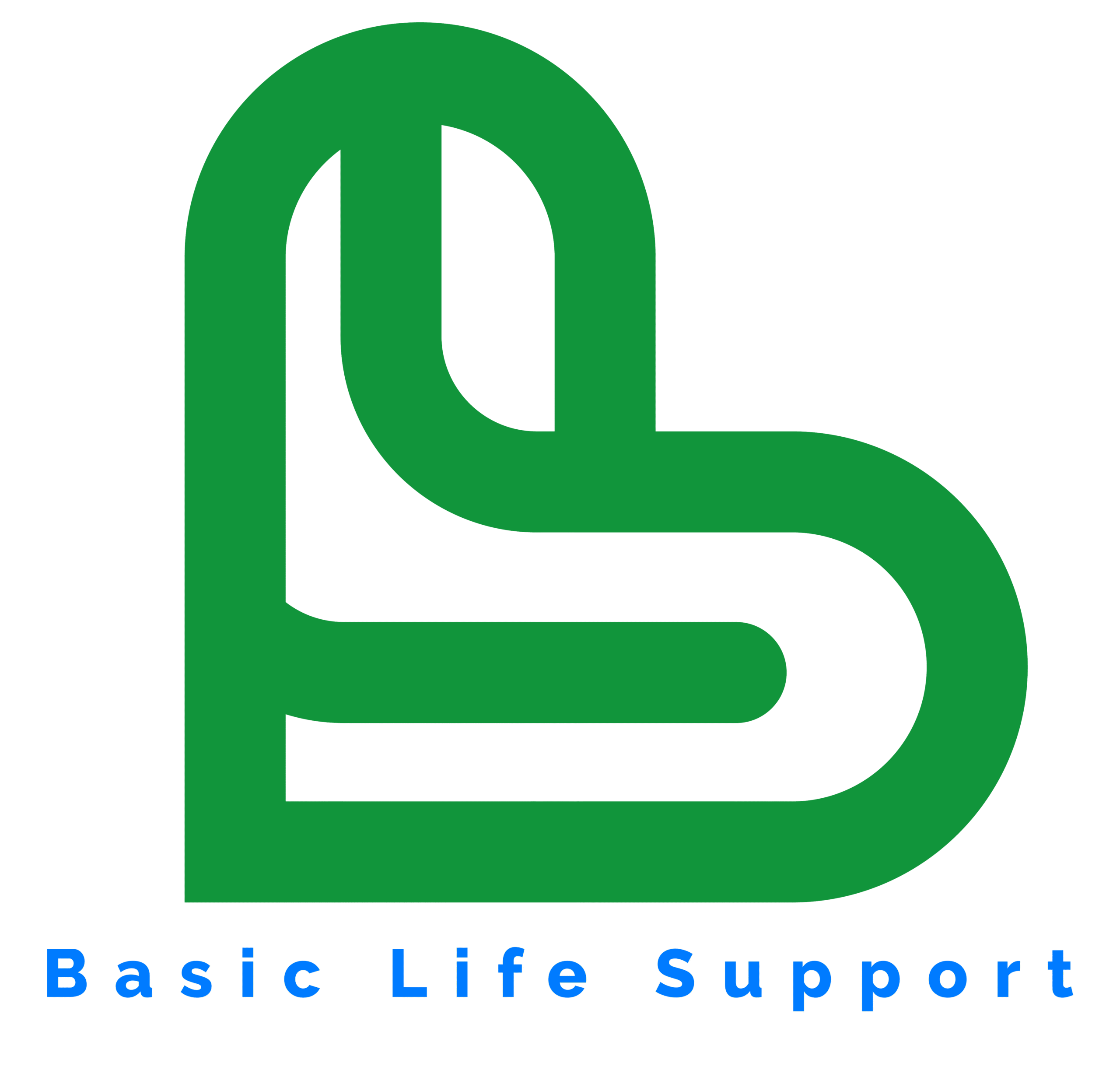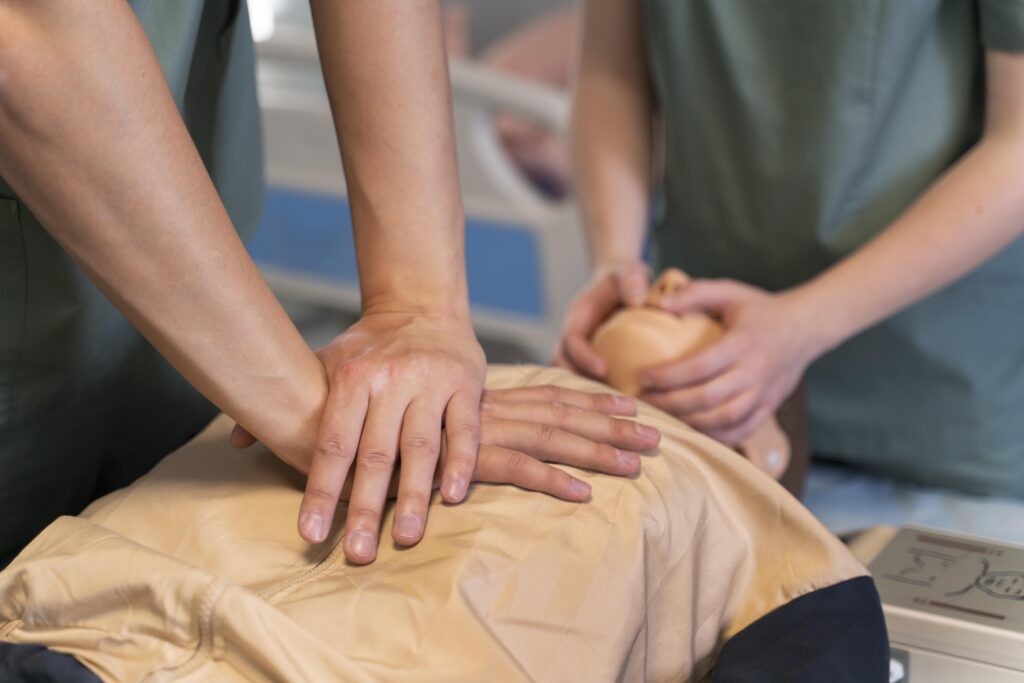In the realm of emergency medical response, you’ll often hear the terms “BLS” and “CPR” used, sometimes seemingly interchangeably. While both are critical life-saving techniques, they are not exactly the same. Understanding the key differences between Basic Life Support (BLS) and Cardiopulmonary Resuscitation (CPR) is crucial for anyone involved in emergency care, from healthcare professionals to trained lay responders in Newmarket, Ontario, and beyond.
Think of it this way: CPR is a core component within the broader framework of BLS.
Let’s break down the distinctions:
Cardiopulmonary Resuscitation (CPR): The Foundation of Immediate Response
- Focus: CPR is a specific technique designed to manually maintain circulation and breathing in an individual whose heart has stopped beating (cardiac arrest) or who has stopped breathing.
- Key Actions: CPR primarily involves two main components:
- Chest Compressions: Rhythmic pressing on the center of the chest to manually pump blood through the body.
- Rescue Breaths: Providing air into the person’s lungs to deliver oxygen.
- Goal: The primary goal of CPR is to keep oxygenated blood flowing to the brain and vital organs until spontaneous circulation and breathing are restored or advanced medical help arrives.
- Scope: CPR is a hands-on technique that can be performed by anyone trained in it, with or without equipment (though barrier devices for rescue breaths are recommended).
- When it’s Used: CPR is initiated when a person is unresponsive and not breathing or not breathing normally.
Basic Life Support (BLS): A Comprehensive Approach to Emergency Care
- Focus: BLS is a broader and more comprehensive level of emergency medical care that encompasses CPR but also includes other essential interventions and considerations for managing life-threatening emergencies.
- Key Actions: BLS includes:
- CPR (Chest Compressions and Rescue Breaths): As the foundational element.
- Airway Management: Techniques to open and maintain a clear airway, such as the head-tilt chin-lift and jaw-thrust maneuvers.
- Breathing Assessment and Support: Recognizing if someone is breathing adequately and providing rescue breaths if needed.
- Circulation Assessment: Checking for a pulse (when appropriate for the responder’s training level).
- Use of an Automated External Defibrillator (AED): Recognizing when an AED is indicated and knowing how to use it safely and effectively to deliver an electrical shock in cases of ventricular fibrillation.
- Recognizing Signs and Symptoms: Identifying the signs of various emergencies like cardiac arrest, stroke, and choking.
- Activating the Emergency Response System: Knowing when and how to call for emergency medical services (like 911 here in Newmarket and across Ontario).
- Teamwork and Communication: Working effectively with other responders.
- Relief of Foreign Body Airway Obstruction (Choking): Techniques for helping adults, children, and infants who are choking.
- Basic Medication Administration (in some BLS protocols): This might include naloxone for opioid overdose, depending on the training and local protocols.
- Goal: The goal of BLS is to stabilize a patient’s condition and prevent further deterioration until advanced medical care (Advanced Life Support – ALS) is available. It’s about the entire initial response to a life-threatening emergency.
- Scope: BLS is typically taught in a structured course that includes both theoretical knowledge and practical skills training. Certification in BLS often requires demonstrating competency in all the included skills.
When it’s Used: BLS protocols are initiated at the first point of contact with a patient experiencing a life-threatening emergency.
Here’s a table summarizing the key differences:
| Feature | Cardiopulmonary Resuscitation (CPR) | Basic Life Support (BLS) |
|---|---|---|
| Scope | A specific technique | A broader system of emergency care |
| Primary Actions | Chest compressions, rescue breaths | CPR, airway management, breathing support, AED use, recognizing emergencies, activating EMS, etc. |
| Focus | Maintaining breathing and circulation | Stabilizing the patient until advanced care arrives |
| Equipment | Can be done with minimal or no equipment | Often includes AED and barrier devices |
| Training | Can be taught as a standalone skill | A comprehensive course with certification |
Why Understanding the Difference Matters
- For Healthcare Professionals: BLS certification is often a fundamental requirement, signifying a broader competency in emergency response beyond just CPR.
- For Lay Responders: While CPR training is invaluable, understanding BLS provides a more complete picture of how to respond effectively in an emergency, including when to call for help and how to use an AED.
- For Effective Communication: Using the correct terminology ensures clear and accurate communication among responders.
In Conclusion
While CPR is a vital and integral component of BLS, BLS encompasses a wider range of skills and knowledge necessary for the initial management of life-threatening emergencies. Think of CPR as a key tool in the BLS toolkit. Both are essential for improving survival rates and empowering individuals in Newmarket, Ontario, and across the globe to make a critical difference when every second counts. Getting certified in BLS provides you with a more comprehensive understanding and skill set to confidently and effectively respond to a medical crisis.




